[Modern Art Series] Cubism – Chapter 3
In 1907, one painting signaled the prelude to a change in painting: Les Demoiselles d’Avignon.
When Pablo Picasso first exhibited this bordello scene with five female figures, even Georges Braque, who later became a figure of the cubist era, considered the painting to be “a loss for French painting”.
In this work, Picasso crafted for the first time a clear and rational lens without any aesthetic allusions.
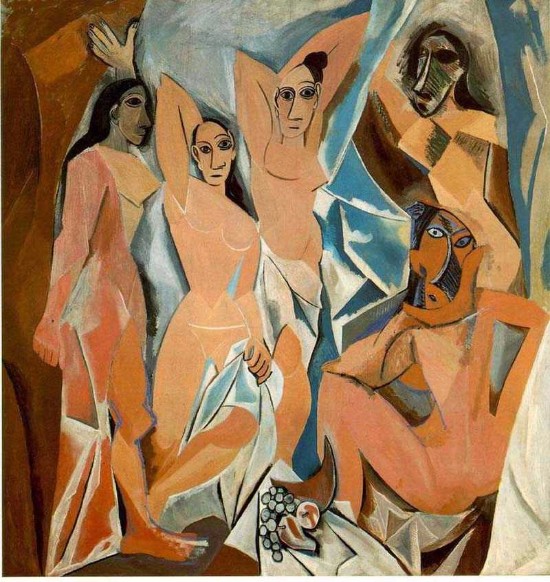
Pablo Picasso, Les Demoiselles d’Avignon, 1907. Oil on canvas, 243.9 x 233.7 cm.
Taking the Cézanne’s demand that in nature one should seek out the sphere, the cone and the cylinder as the basis for his compositional ideas, Picasso fragmented the forms into small cubes. It was the task of the viewer, when standing before the canvas, to put this puzzle of various spatial views together into a whole.
Pablo Picasso, Table in a Café (Bottle of Pernod), 1912. Oil on canvas, 45.5 x 32.5 cm.
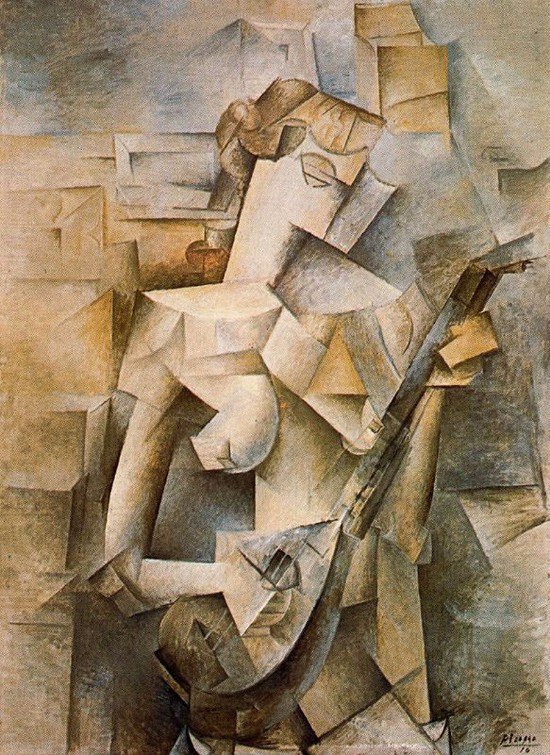%2C%201910.jpg)
Pablo Picasso, Girl with a Mandolin (Fanny Tellier), 1910. Oil on canvas, 100.3 x 73.6 cm.
Friends Georges Braque and Pablo Picasso later declared: “We did not have the intention of creating Cubism. Moreover, we just wanted to express that which moved us It almost seemed as if we were two mountain climbers who were hanging from a single rope.”
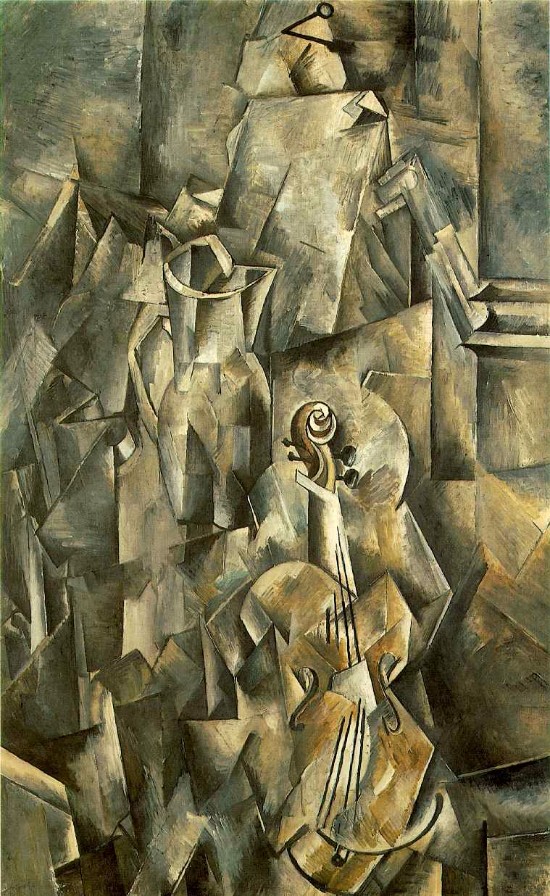
Georges Braque, Pitcher and Violin, 1909-1910. Oil on canvas, 117 x 73.5 cm.
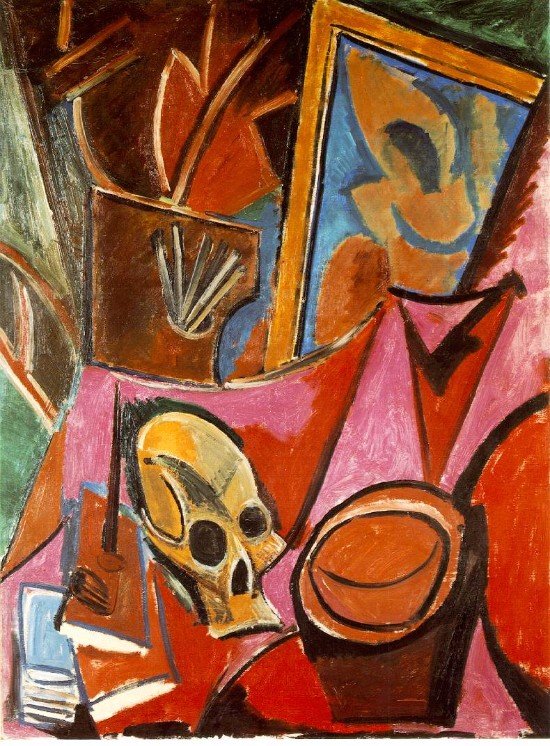
Pablo Picasso, Composition with Skull, 1908. Oil on canvas, 116.3 x 89 cm.
Between 1909 and 1912, the Cubists separated their art from everything real without turning completely to abstraction. They no longer painted an object viewed from one perspective, but rather layered views from many angles in order to capture the subject from all sides.
They analyzed the object and brought it to the canvas as a fragmented picture. Shape and space melted into one another.
Instead of creating volume, the painters focused on revealing facets and constructing intersecting surfaces.
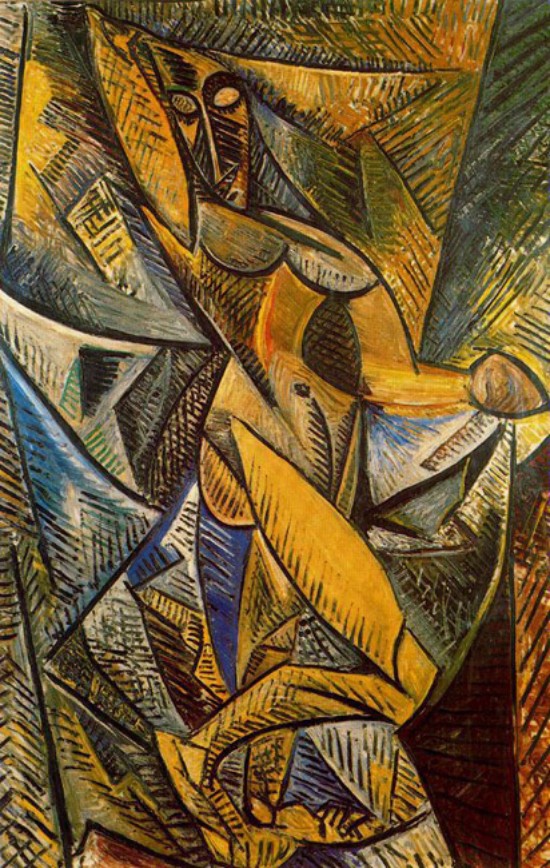%2C%201907.jpg)
Pablo Picasso, Dance of the Veils (Nude with Drapery), 1907. Oil on canvas, 150 x 100 cm.
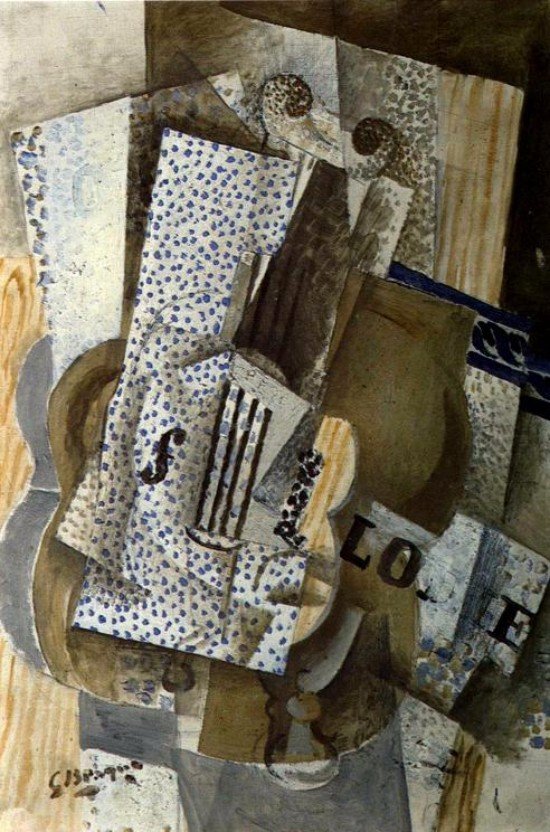
Georges Braque, Violin Melodie, 1914. Oil on canvas, 55.4 x 38.3 cm.
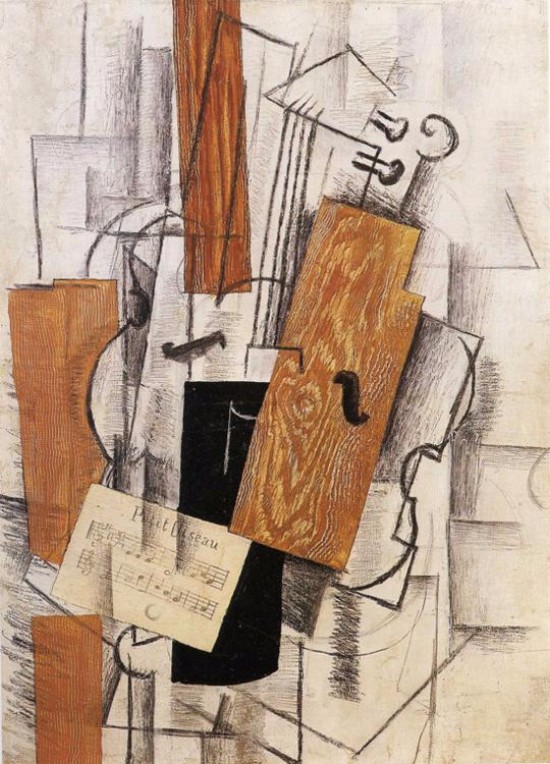.jpg)
Georges Braque, Violin and Sheet Music on a Table (Petit Oiseau), 1913. Charcoal, Oil on canvas, 73 x 54 cm.
Later, Cubist artists no longer arranged their still lifes so that they could paint from reality; rather, they created them out of the imagination, adding numbers and word fragments to the compositions. It was no longer about taking the objects apart; now artists set about creating new objects.
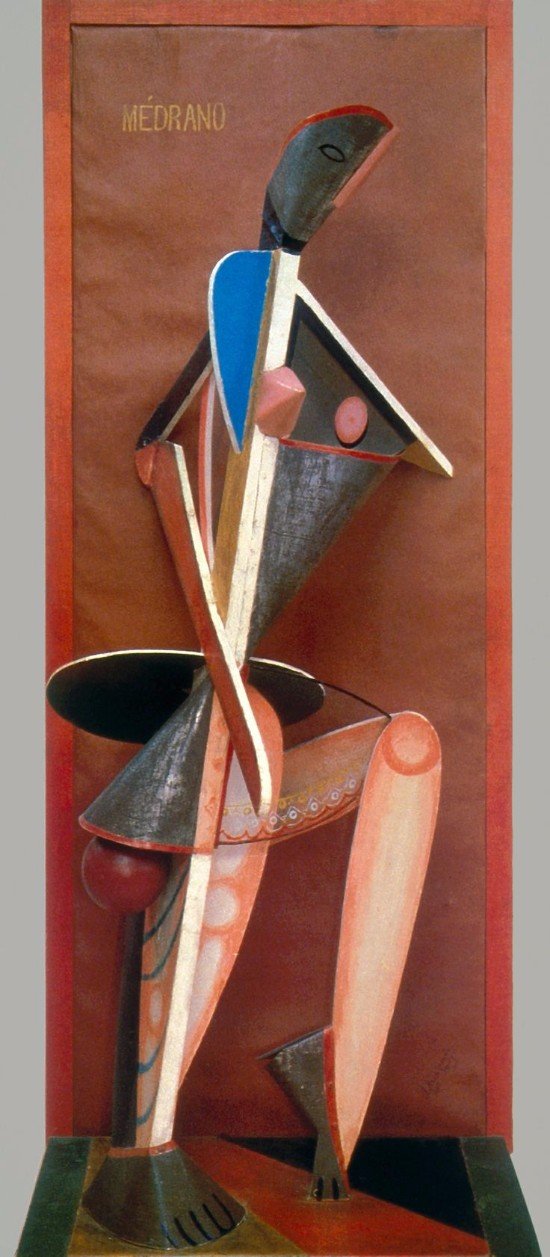
Alexander Archipenko, Medrano II, 1913-1914. Iron, wood, glass and oil cloth, 126.6 x 51.5 x 31.7 cm.
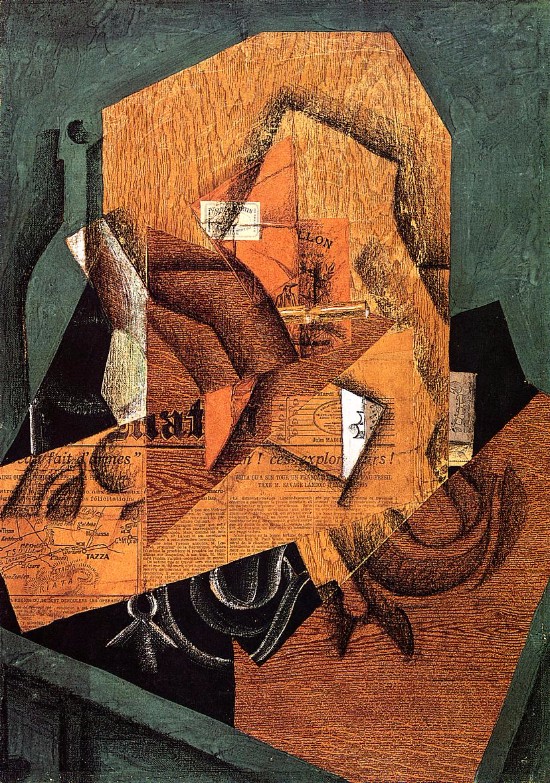
Juan Gris, Pack of Coffee, 1914. Gouache, 64.8 x 47 cm.
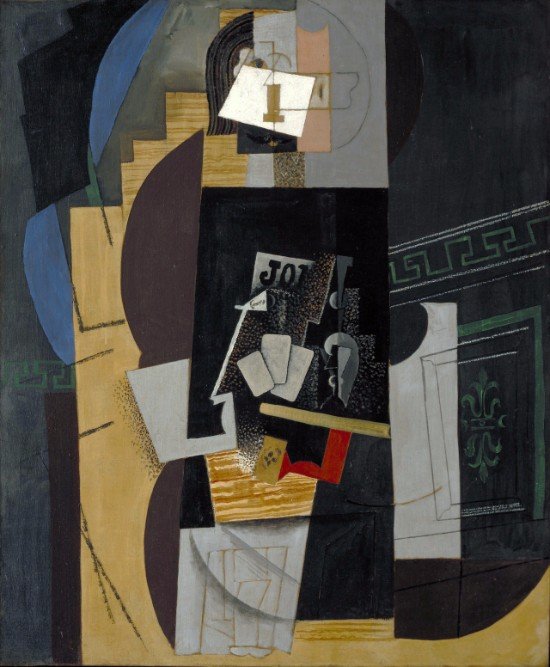%2C%201913.%20Oil%20on%20canvas%2C%20108%20x%2089%20cm.jpg)
Pablo Picasso, L'Homme aux cartes (Card Player), 1913. Oil on canvas, 108 x 89 cm
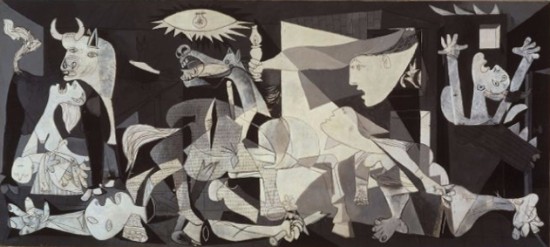
Pablo Picasso, Guernica, 1937. Oil on canvas, 349.3 x 776.6 cm
Cubism, the art of painting new ensembles, borrowed not from visual reality but from suggestions made to the artist by instinct and intuition.
Picasso and his Cubists friends wanted to depict objects not the way they appear to the eye but the way they are in our thoughts. There was no end, no unity, no human being as a measure of things, there existed only the cosmos, the infinite fractions of volumes in space.
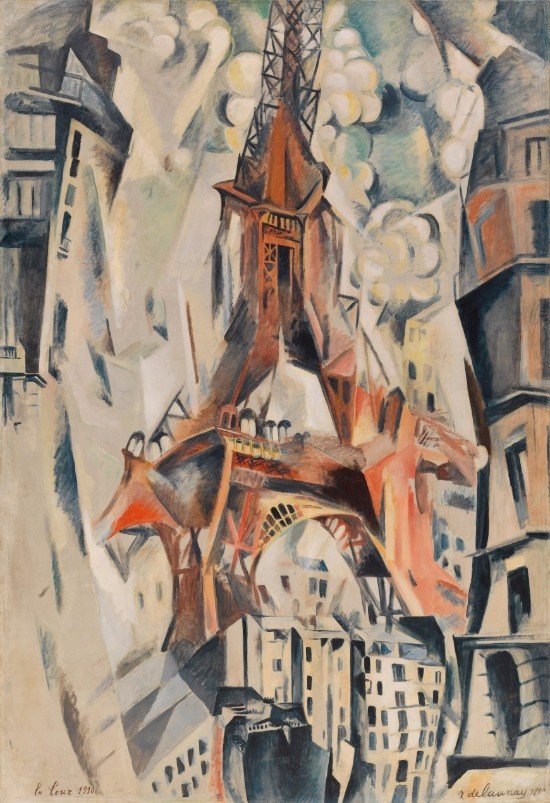
Robert Delaunay, Eiffel Tower, 1911. Oil on canvas, 202 x 138.4 cm.
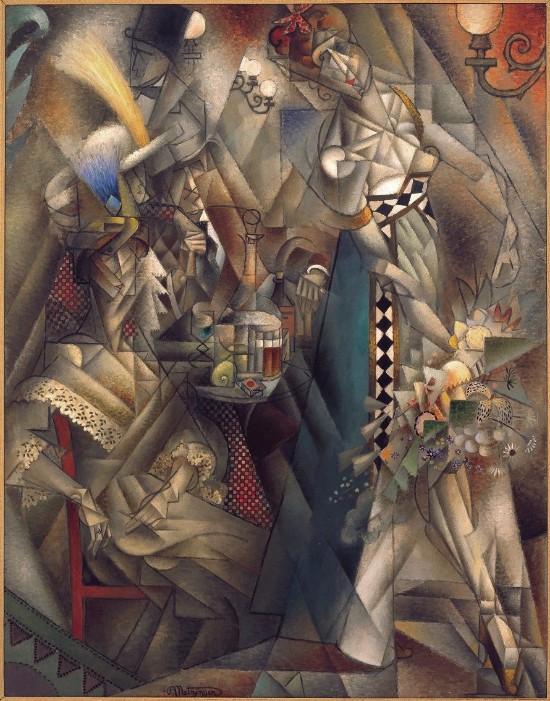
Jean Metzinger, Dancer in a Café, 1912. Oil on canvas, 146.1 x 114.3 cm.
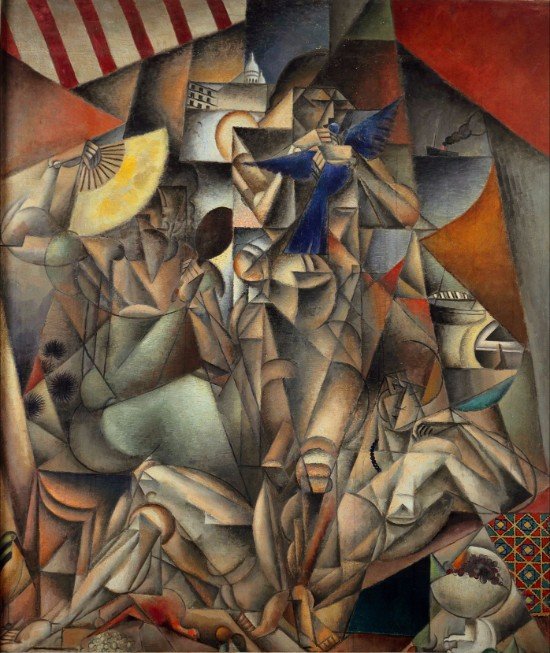
Jean Metzinger, The Blue Bird, 1913. Oil on canvas, 250 x 193 cm.
Follow me for more on this Modern Art series.
https://steemit.com/@achraf7b
References & Additional Resources:

Congratulations @achraf7b! You have completed some achievement on Steemit and have been rewarded with new badge(s) :
Click on any badge to view your own Board of Honor on SteemitBoard.
For more information about SteemitBoard, click here
If you no longer want to receive notifications, reply to this comment with the word
STOP